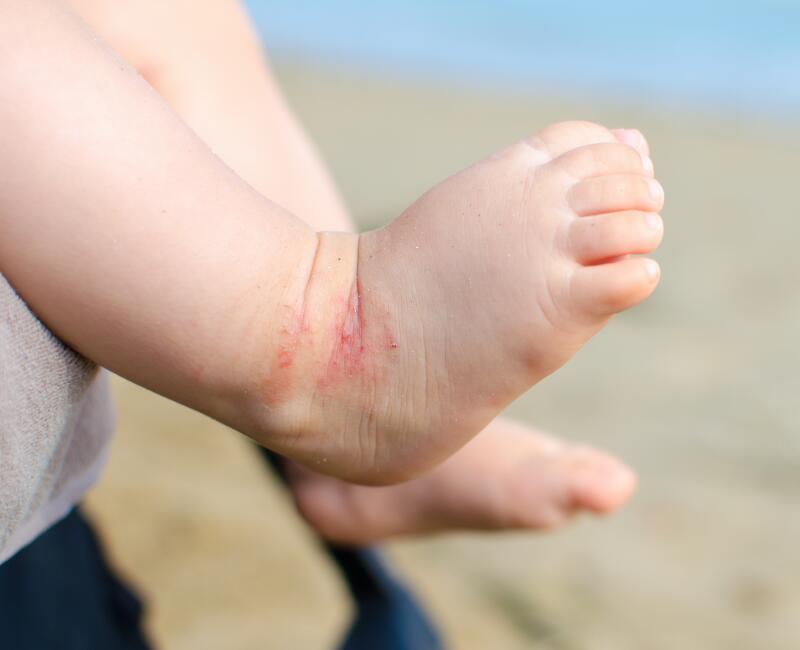-
Your concerns
Our articles to help you gain a better understanding
-
Our solutions
-
Ducray Dermatological laboratories
Our articles to help you gain a better understanding

Eczema in babies and children is most often atopic eczema. Eczema plaques can be located in different places depending on age. Here are the areas most often affected by eczema in babies, according to age:

Summary
Atopic eczema generally appears from the first months of life, on average around 3 months and sometimes from birth. It is estimated that 60 to 80% of atopic eczema is diagnosed before the age of one year. Eczema appears symmetrically on the curved (convex) areas of the face and limbs, meaning the cheeks and outer surfaces of the arms and legs, as well as the torso. Plaques are often very red and oozing then become covered with scabs and sometimes superinfected. Skin folds are sometimes already affected. The skin is not always dry and generally clears up between age 1 and 2.
After age 2, lesions migrate to the skin folds, neck, knees, elbows, wrists and ankles, but also to the hands, eyelids, lips and ears. Skin dryness becomes inevitable, especially in winter. Plaques are less inflammatory and tend to thicken.
Regardless of the child's age, eczema plaques are often accompanied by a sensation of heat and severe itching. This causes them, and their parents, to have trouble sleeping
Atopic eczema in children can develop into contact eczema. This eczema is different to atopic dermatitis because it is not of constitutional origin and remains localized in the areas in contact with the product. For example: a little girl with atopic eczema may no longer be able to wear costume jewelery (earrings, necklace, bracelet, etc.) simply because she has developed a contact allergy to the nickel in these objects. Sometimes, contact eczema occurs in an isolated manner, including in children.
Skin prone to atopic eczema, contact eczema, chronic eczema and/or, eyelid eczema
NEWSLETTER
Dermatological expertise
To better understand your skin and hair, discover our exclusive content and innovative care products designed to improve your quality of life..